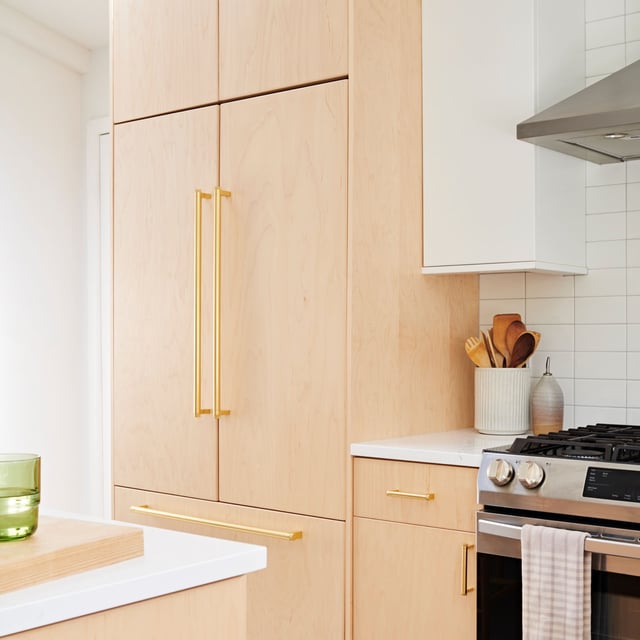
Design
What Size Refrigerator Should You Get During Your Kitchen Remodel?
04.25.2025

In This Article
Remodeling your kitchen can be an exciting yet overwhelming task, especially when it comes to picking out new appliances. One key decision you'll have to make is choosing the right refrigerator size for your space.
The refrigerator is not only essential for food storage but also plays a vital role in the kitchen's overall look and functionality. Getting the best refrigerator size can make daily tasks smoother and ensure your kitchen looks great and works well. In this post, we'll dive into how you can find the perfect fit for your kitchen remodel.
When you're starting a kitchen remodel, understanding the space you have for appliances is crucial. One of the most important measurements you'll take is for your refrigerator, as it needs to fit seamlessly into your kitchen layout. Knowing exactly how much room you have will help you pick the best refrigerator size for both functionality and style.
Renovate with confidence every step of the way
Step 1: Personalize Your Renovation Plan
Step 2: Receive Quotes from Trusted Contractors
Step 3: Let Us Handle the Project Details

Taking precise measurements of your kitchen space is the first step in choosing the right refrigerator size. By doing this, you can avoid future hassles like a refrigerator that doesn’t fit or blocks walkways. Here's a simple guide to help you measure correctly:
With these measurements in hand, you're well on your way to picking a refrigerator that fits perfectly into your kitchen remodel.
Your kitchen layout plays a big role in where your refrigerator should go and can greatly affect workflow and traffic flow. A poorly placed refrigerator can lead to constant inconveniences, especially during busy meal prep times. To ensure the best refrigerator size fits seamlessly, consider these aspects:
Tips for Redesigning Layouts:
By thoughtfully evaluating and adjusting your kitchen layout, you can seamlessly incorporate your new refrigerator and enhance the overall kitchen experience during your remodel.
Choosing the right type of refrigerator is just as important as choosing the right size when planning your kitchen remodel. There are several styles available, each offering unique benefits that can fit different kitchen designs and family needs. Understanding these options will help you pick the best refrigerator style that complements your kitchen layout and lifestyle.
When it comes to choosing a refrigerator, there are several popular styles to consider. Each has its own set of features that cater to different needs and kitchen layouts. Here's a quick look at the options:
Design a Home That’s Uniquely Yours
Block can help you achieve your renovation goals and bring your dream remodel to life with price assurance and expert support.
Get Started
Finding the ideal refrigerator size is a key part of your kitchen remodel, ensuring both functionality and comfort. It's important to consider your household size and lifestyle needs to make an informed decision.
Choosing the right refrigerator size begins with understanding the dynamics of your household and lifestyle. For singles or couples, a smaller refrigerator with around 10-12 cubic feet can usually meet all their needs. However, larger families often require more space, with at least 18-20 cubic feet or more to store weekly groceries.
Beyond family size, your lifestyle plays a significant role too. If you love cooking and often prepare meals at home, you'll need more storage for fresh ingredients and leftovers. On the other hand, if you frequently dine out and shop for groceries in smaller quantities, a compact or medium-sized refrigerator might suffice. Understanding these patterns will help you select a refrigerator size that best suits your everyday routine.
When choosing the right refrigerator size, knowing the recommended cubic feet based on your household size can be incredibly helpful. Here are some general guidelines to consider:
By considering these size recommendations, you can ensure that your refrigerator will perfectly match your family's needs and kitchen remodel plans.
Turn your renovation vision into reality
Get matched with trusted contractors and start your renovation today!
Find a Contractor
While size is crucial, extra features can significantly enhance your refrigerator's functionality and convenience. Exploring these options will help you find a model that not only fits but also upgrades your kitchen experience.
When choosing a refrigerator, energy efficiency is an essential consideration that benefits both your wallet and the environment. Energy ratings, often displayed as Energy Star labels, indicate how well a model uses electricity. These ratings help you identify refrigerators that consume less power while maintaining performance.
Opting for an energy-efficient refrigerator can lead to significant cost savings on your electricity bills over time. Although these models might have a higher upfront cost, the reduction in energy consumption means you'll pay less for power every month. Additionally, using less energy reduces your carbon footprint, making energy-efficient refrigerators an environmentally friendly choice for your kitchen remodel.
Modern refrigerators are no longer just about keeping food cold. They come with a variety of smart features that can make your kitchen experience more efficient and enjoyable. For example, some models have touch screens that allow you to access recipes, calendars, and even stream music or videos.
Built-in cameras inside the fridge can let you see what's inside without opening the door, perfect for quickly checking your inventory while at the store. And with connectivity to home automation systems, you can control temperatures, manage settings, and receive alerts right from your smartphone. These advancements add convenience and integrate your refrigerator seamlessly into a smart home setup.
Another great feature to consider is adjustable and customizable storage. Modern refrigerators often come equipped with shelves and door bins that you can rearrange to fit different sizes of food and containers. This flexibility allows you to maximize space and organize your fridge exactly how you need it. Specialty compartments, like temperature-controlled drawers, offer designated areas for specific items such as meat, cheese, or produce, ensuring they stay fresh longer. With these options, you can customize your refrigerator to match your unique storage needs, making every inch functional and accessible.
When remodeling a kitchen, the refrigerator isn't just an appliance; it's also a key design element. Matching its style with your kitchen décor can enhance the overall look, creating a harmonious space you'll love spending time in.
Choosing the right finish can make a big difference in how your refrigerator complements your kitchen. Stainless steel is a popular choice for a sleek, modern look, and it pairs well with a variety of color schemes. Matte black offers a sophisticated, trendy alternative that adds a touch of elegance. For those who want a splash of color, colorful enamel finishes can bring a lively and personalized touch to your kitchen. Considering these finishes ensures your refrigerator enhances the aesthetic you desire.
For a truly seamless look, built-in and panel-ready refrigerators are excellent options. Built-in models are designed to sit flush with your cabinetry, providing a clean and integrated look. Panel-ready refrigerators take this a step further by allowing you to attach custom panels to match your cabinets exactly. This creates the illusion that the refrigerator is part of the cabinetry, offering a cohesive and high-end appearance. These options are perfect for those looking to blend appliances with their kitchen design seamlessly.
Balancing budget considerations with refrigerator needs is an important step in your kitchen remodel. Ensuring you have a realistic financial plan helps prevent overspending while still achieving the functional and aesthetic goals you have in mind.
Before heading to the store, it's crucial to determine how your refrigerator fits into your overall kitchen remodel expenses. Consider other costs such as cabinets, countertops, and appliances to see how much you can allocate to a new fridge. Having a clear budget in mind helps you narrow down choices to those that align with your financial plan, ensuring a smooth remodeling process.
Refrigerator prices can vary significantly depending on size, style, and brand. For instance, compact refrigerators are generally more affordable than larger, French door models. Side-by-side and bottom-freezer designs might land in the middle range. Brand-specific price factors, like additional features or reputation for durability, can also influence costs. Comparing these aspects helps you decide which style offers the best value for your needs.
While upfront costs are important, considering the long-term value of energy-efficient refrigerators is beneficial. These models often have a higher purchase price, but they can save you money on electricity bills over time. The savings from reduced energy consumption can eventually offset the initial cost, making energy-efficient models a worthwhile investment. Evaluating these factors ensures that your refrigerator not only meets your immediate needs but also contributes to cost savings in the future.
Renovate now, pay later
Achieve the space you're looking for today, while financing it over time with our trusted partner.*
*Not available in NYC
Learn More
Selecting the right refrigerator size is a vital part of your kitchen remodel, enhancing both functionality and style. By assessing your kitchen space, understanding your family's needs, and exploring additional features, you can make an informed decision. Remember to keep aesthetic and budget considerations in mind for a harmonious and cost-effective addition to your home. With the right balance of these factors, you can choose a refrigerator that perfectly complements your new kitchen.
What is the ideal refrigerator size for a family of four?
How much clearance is needed around a refrigerator?
Can a larger refrigerator still be energy efficient?
Are smart refrigerators worth the investment?
How often should a refrigerator be replaced?
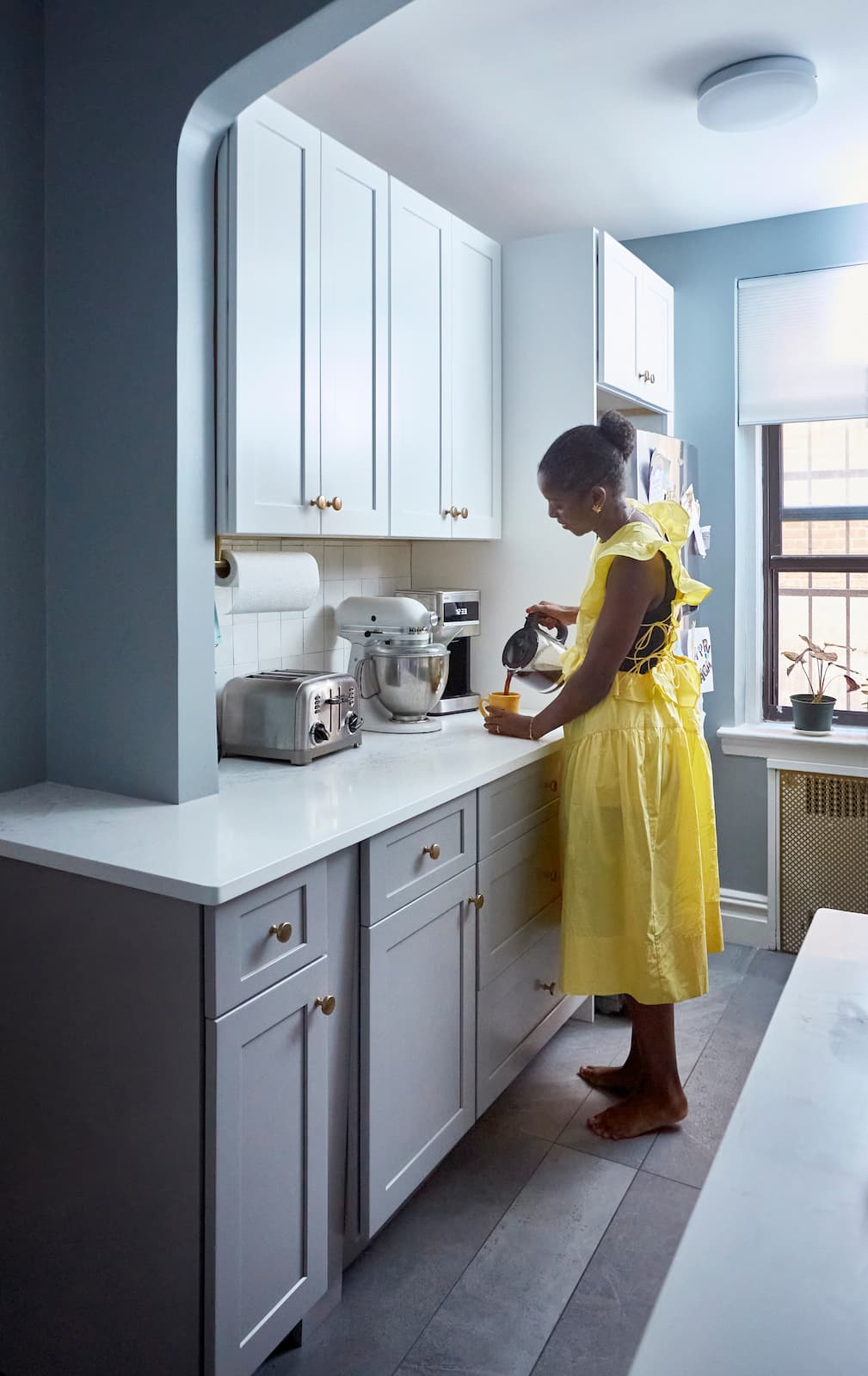
Renovate confidently with Block
Easily compare quotes from top quality contractors, and get peace of mind with warranty & price protections.
Thousands of homeowners have renovated with Block

4.5 Stars (100+)

4.7 Stars (100+)

4.5 Stars (75+)

Design
What Size Refrigerator Should You Get During Your Kitchen Remodel?
04.25.2025
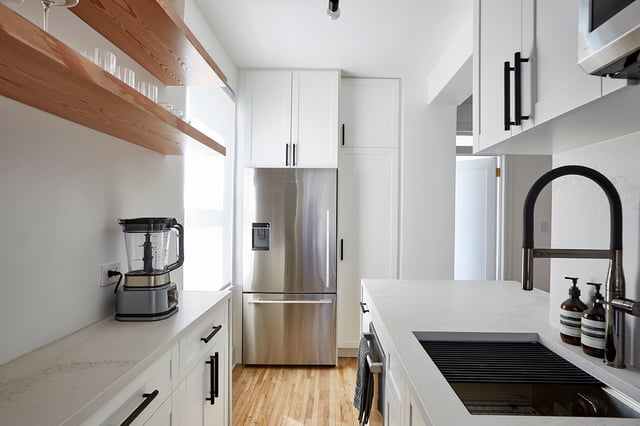
Remodeling
How to Plan a Kitchen Renovation Without Blowing Your Budget
04.25.2025
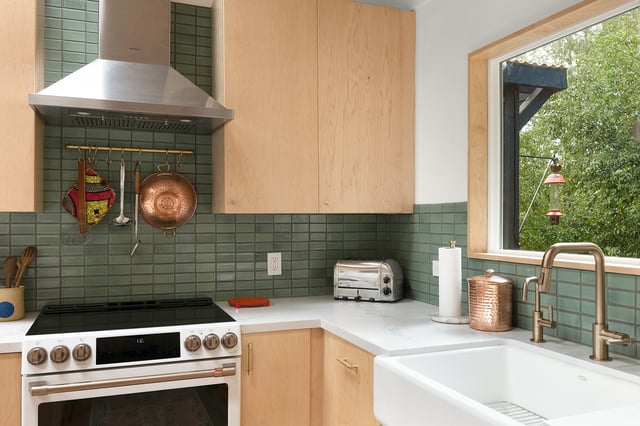
Remodeling
How to Plan Your Kitchen Remodel Step by Step
04.25.2025
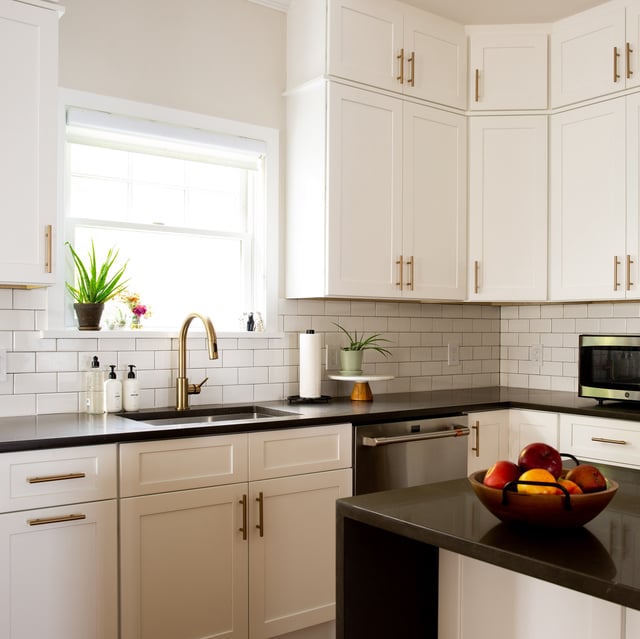
Kitchen
How Long Does a Kitchen Remodel Take?
04.01.2025

Design
The Ultimate Guide to Kitchen Tiles with Tile Options
04.01.2025
Renovate confidently